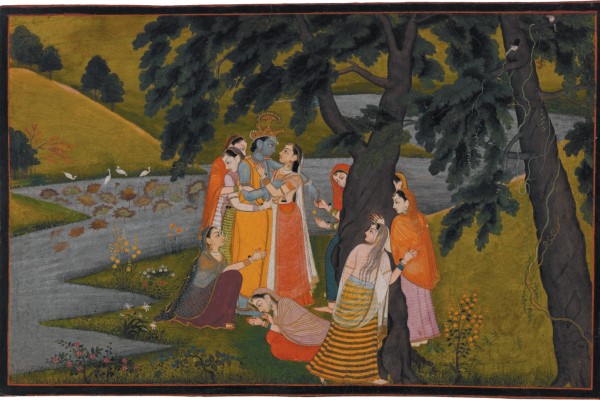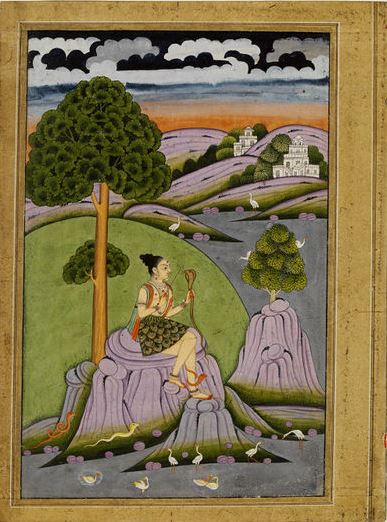From 1750 to 1850 India experienced one of its most turbulent and violent periods. Fissures in the Mughal Empire that had controlled most of the subcontinent since the early sixteenth century allowed competing states to take control. Written down as history, it sounds like yet another shuffling of rulers and borders, but for the contemporaries it meant slaughter and starvation. When you keep in mind the scope of the calamities, the ethereal world of the art produced at the time comes as a surprise.

“Here lovers cling to each other in abandon, surrounded by a mosaic of cushions and bolsters; elephants run amok and dart under the arches scraping their sides; armies of monkeys and bears turn into a vast cloud as they advance upon Lanka; the universe comes into being before one’s eyes as matter begins to form from void; a tiger shot in a forest tumbles nineteen times over before it falls to the ground; a blind poet envisions baby Krishna waking up; princes stand on marble embankments feeding crocodiles;… boats ply on gentle waters while lovers escape to fragrant arbours. There is so much to see here, and savour, as painters play around with time and keep manipulating space at will.”
Continue reading →



















Ewan in Spring 2024 Perfume Launches : Lilac, Vetiver, Moss and Seaweed: I took the opportunity to blend seaweed, vetiver and mimosa essential oils. It is a very pleasant and interesting menage a trois. At first the seaweed hits the nose but… April 18, 2024 at 1:32am